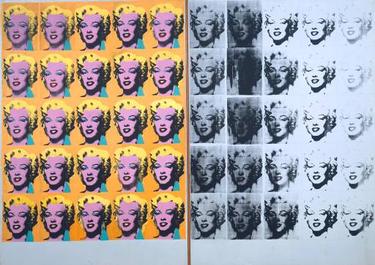In 2014, the comedian Joan Rivers unexpectedly died after a routine medical procedure. She was 81, though she didn’t look it. Over the years, Rivers had undergone more than 300 cosmetic procedures to alter her appearance. At the time of her death, therefore, she looked many years younger than her real age. But it wasn’t just that the surgeries made Rivers look younger—they also made her look different. Joan Rivers, at age 81, did not simply look like Joan Rivers at, say, age 61. Instead, the 81-year-old Rivers looked like a whole different person. Her arched brows, narrow nose, and plumped lips helped her fit into the glamorous “red carpet” environment where she had come to make her career.
Many other celebrities are equally well-known for achieving sculpted appearances that differ markedly from the “natural.” Michael Jackson is a particularly famous example, having dramatically changed both his facial structure and his skin tone in pursuit of a magically boyish ideal. An extreme case is the French conceptual artist Orlan, who has undergone many surgeries to look like classic paintings. She has even provocatively declared that she is “against nature, DNA—and God.”
Rivers, Jackson, and Orlan were (or are) long-time performance artists for whom the line between public and private became erased. For these three artists, personal identity was largely subsumed in “persona,” and the “persona” had to be maintained at all costs. Indeed, for these performers, it was the “persona” that enabled them to keep doing what they wanted—enabled them to keep being the artists they wanted to be. To a large extent, their core identity was (and is) based on public perception, so public perception had to be managed carefully and kept stable, even as the body changed.
Andy Warhol, Guy Debord, and the Pioneers of Pop Art
By the 1960s, cutting-edge Pop artists were already riffing on the media-age collapse of public and private, which made identity and “persona” equivalent. A famous visual example is Andy Warhol’s cheekily titled “Marilyn Diptych,” which shows a gaudy persona (the lip-sticked, seductively smiling Marilyn Monroe) fading into nothingness. This artwork has often been interpreted as a commentary on how the demands of “public image” can erase the real person behind the facade. (Monroe famously died of a drug overdose at age 37.) Warhol’s notorious quip about “fifteen minutes of fame” also touched on this reality. In an age of mass media, everyone scrambled to craft a public image that could (briefly) enchant the airwaves. Maybe, if only for 15 minutes, overlooked people hungry for attention could finally feel important, seen, real.
 Andy Warhol, Marilyn Diptych, 1962, (Tate Gallery) acrylic on canvas / Low resolution under Fair Use via Wikimedia commons
Andy Warhol, Marilyn Diptych, 1962, (Tate Gallery) acrylic on canvas / Low resolution under Fair Use via Wikimedia commons
Another cultural commentator who analyzed this phenomenon was the French philosopher Guy Debord. An influential Marxist and atheist, Debord was estranged from his Catholic roots, but he recognized the dangers of modern consumerism. For Debord, the erasure of natural personhood in favor of public persona was a symptom of a wealthy, consumerist paradigm that posited anything could be bought—even personal identity. Debord is famous for having observed the “degradation of being into having, and. . . having into appearing.”
In other words, for Debord, the modern world had gone through a process of downgrading. Once the real, intrinsic value of things had been recognized and prized. Then, with the consolidation of industrialist wealth, it was enough to simply own things without understanding or respecting them. The final phase in this process was the least “real” of all: it favored shallow visual signaling above the richness of the material world.
Debord, as we can see, was prophetic. Now, “virtue signaling” is a common phrase and many young people (and older people!) live lives that thoroughly collapse natural identity into “persona.” This is not surprising, for since Debord wrote in the 1960s, citizens of the modern West have become, on average, both much wealthier and much more inundated by an invasive, all-consuming mass media. “Identity-shaping” tools once restricted to elite celebrities are now available to almost everyone.
Finding Our True Identity
In Catholic theology, based on the philosophy of Thomas Aquinas and Aristotle, the soul is held to be the “form” of the person, comprising their true, unique identity. At death, the body and soul are separated; the body thus decays, losing its form, but the soul continues on. When celebrities of the 50s and 60s like Marilyn Monroe and Elvis Presley evolved indelible public “personas,” did they externalize something about their eternal souls, or did they reduce their rich, real personalities to something “sexier” and more marketable? What about Joan Rivers and Michael Jackson? Did their innumerable surgeries reveal something about their deep, inner essences, or were they rather attempts to run away from their true selves in order to hold onto fame and success?
When it comes to celebrities—especially “doomed” celebrities like Monroe, Presley, or Jackson—we often lament the erasure of natural qualities in favor of the marketable persona. But when it comes to ourselves, we often think differently. We imagine that if we could just change the right thing about our bodies, achieving the persona we desire, everything would fall into place.
The Bible, the prophets, and the mystics, however, affirm that God alone sees, and God alone satisfies. As St. Augustine famously said, “My soul is restless until it finds its rest in thee.” The Bible also affirms that we are all “fearfully and wonderfully made,” with special, God-given gifts meant for building up society. In the Christian paradigm, our real identity is obscure, perfectly understood only by God, and coaxed into fulfillment by the work of the Holy Spirit. Furthermore, our real identities will face opposition in this life, as we are called to reject everything secondary, every ulterior motive, in the search for what is really real. Even in old age—and through the process of old age!—we keep discovering our eternal identities and refining them. They will be fulfilled only in heaven.
In the end, the “public eye”—the society around us—will never give us the recognition we crave. It will be fickle and changeful, making us feel as if we will never “arrive”—as if we will never be good enough. The only recognition that satisfies comes from the eyes of our heavenly Father, who had made us to reflect His richness and who looks upon us and lovingly calls us “children of God.”

